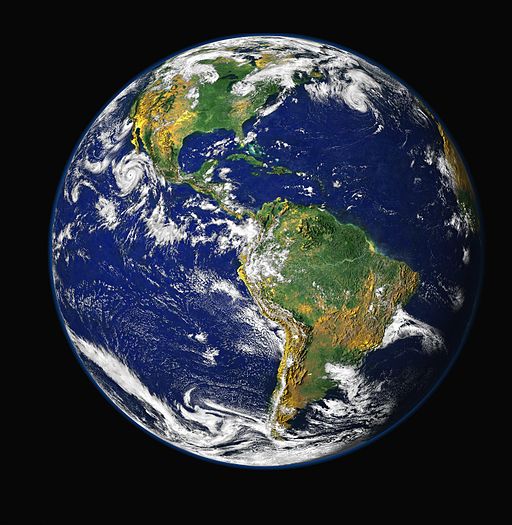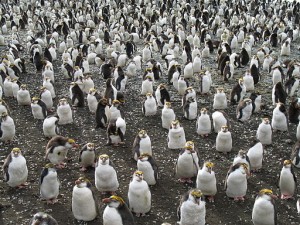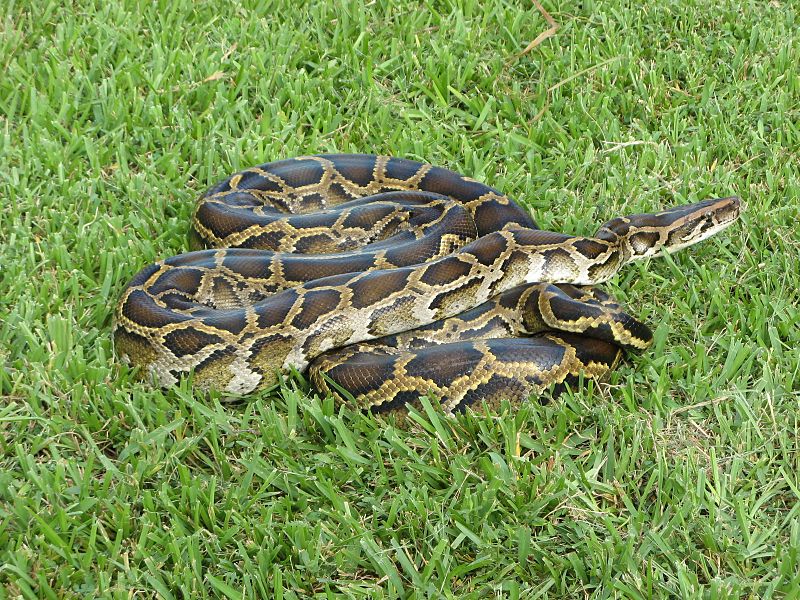The Sixth Mass Extinction is Underway
Using fossil records and extinction counts, the researchers compared a highly conservative estimate of current extinctions with a background rate twice as high as those widely used in previous analyses. This way, they brought the two estimates as close to each other as possible.
 Image: By NASA/ GSFC/ NOAA/ USGS [Public domain], via Wikimedia Commons
Image: By NASA/ GSFC/ NOAA/ USGS [Public domain], via Wikimedia Commons There is general agreement among scientists that species extinctions have reached levels unparalleled since the dinosaurs died out. Nevertheless, many believed that previous estimates relied on assumptions that overestimated the crisis. However, an historic study has shown that, even with highly conservative estimates, there is now no doubt. The sixth mass extinction is underway.
The study, published in Science Advances, proves that species are disappearing at a rate of 114 times faster than the normal rate between mass extinctions. This is known as the background rate, which is roughly 2 mammal species extinctions every 10,000 years. We have already seen the extinction of at least 77 mammals, 140 birds and 34 amphibians since 1500. “If it is allowed to continue, life would take many millions of years to recover, and our species itself would likely disappear early on,” said lead author Gerardo Ceballos.
Using fossil records and extinction counts, the researchers compared a highly conservative estimate of current extinctions with a background rate twice as high as those widely used in previous analyses. This way, they brought the two estimates as close to each other as possible. Focusing on vertebrates, the group for which the more reliable modern and fossil data exist, they asked whether even the lowest estimates of the difference between background and contemporary extinction rates still justify the conclusion that people are precipitating “a global spasm of biodiversity loss.” The answer was a resounding yes. “We emphasise that our calculations very likely underestimate the severity of the extinction crisis, because our aim was to place a realistic lower bound on humanity’s impact on biodiversity,” the researchers write.
Human impacts threatening other species comprise a long list, which includes land clearing for farming, logging and settlement, introduction of invasive species, carbon emissions and toxins that alter and poison ecosystems. According to the IUCN, around 41% of amphibian species and 26% of all mammals are currently facing extinction. As species disappear so do crucial ecosystem services such as honeybees’ crop pollination and wetlands’ water purification. At the present rate of species loss, we will likely lose many biodiversity benefits within three generations.
There have been five mass extinction events – the first was the Ordovician-Silurian 443 million years ago during which 83% of sea life was wiped out, and the last saw the extinction of the dinosaurs, 66 million years ago. Paul Ehlrich, one of the authors who is famous for his work on human overpopulation and extinctions, said: “[The study] shows without any significant doubt that we are now entering the sixth great mass extinction event. There are examples of species all over the world that are essentially the walking dead.”
Despite this gloomy outlook, there is a meaningful way forward. The authors call for fast action to conserve threatened species, populations and habitats but warn that the window of opportunity is rapidly closing. “Avoiding a true sixth mass extinction will require rapid, greatly intensified efforts to conserve already threatened species, and to alleviate pressures on their populations – notably habitat loss, over-exploitation for economic gain and climate change.”





No comments yet.